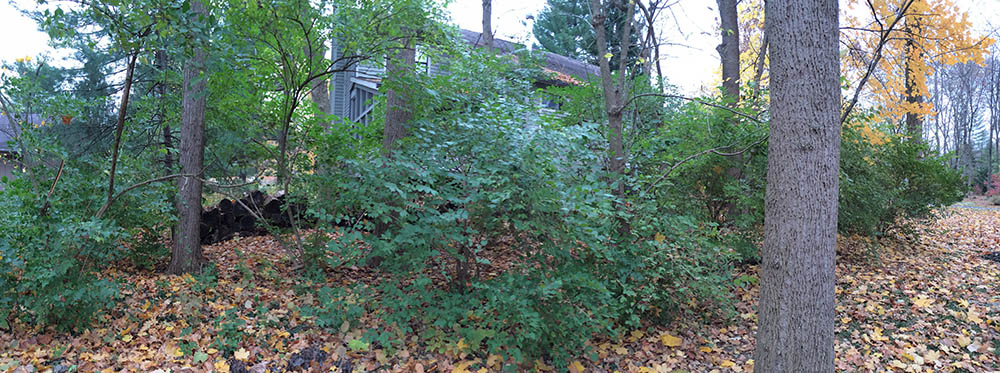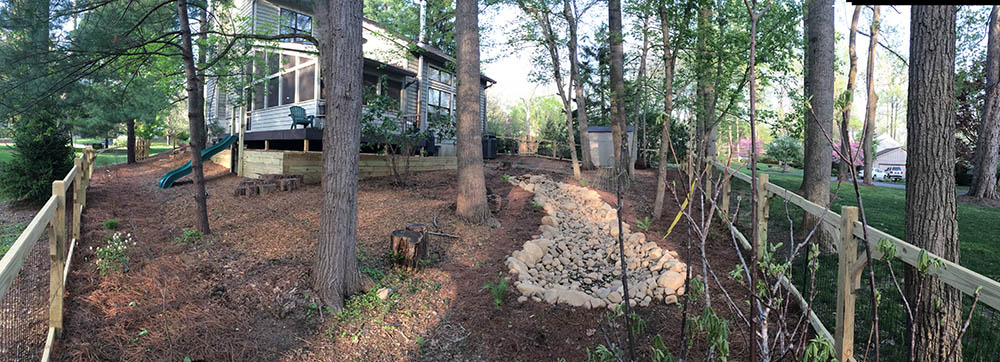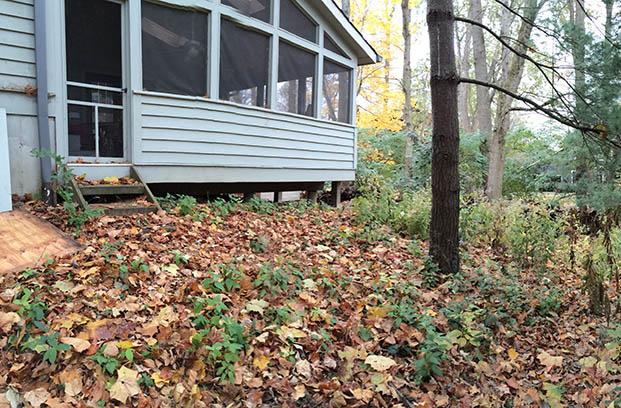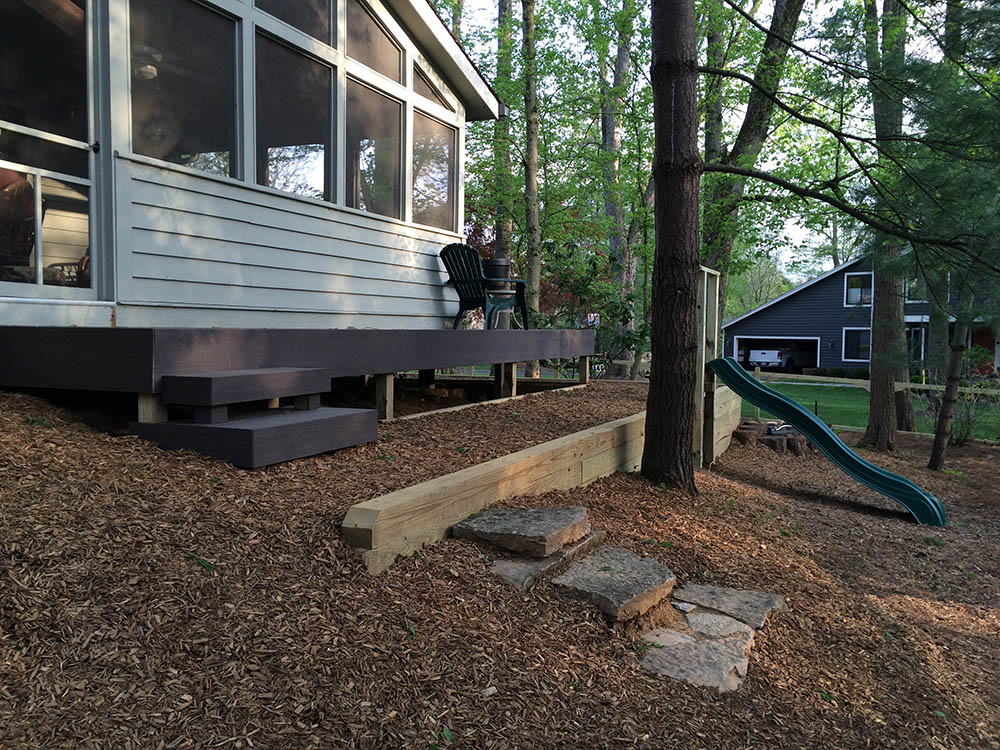A Fun Nature Playscape for the Kids (Anderson Township)
The Challenge
In this backyard in Anderson Township, invasive honeysuckle and English ivy grew thick. The space was unused.
With a three-year-old and a newborn on the way, the family wanted a space for playing and relaxing – a place to explore, learn, and enjoy within eyesight of Mom and Dad.
(Above photos) Before, invasive plants filled the backyard, which sat unused. After, a nature playscape invites the kids to play while the parents relax within eyesight.
The Transformation
Today, on a summer evening, you can find the whole family outside.
AFTER: A nature playground solves drainage issues while providing ample opportunities for children to learn and explore.








